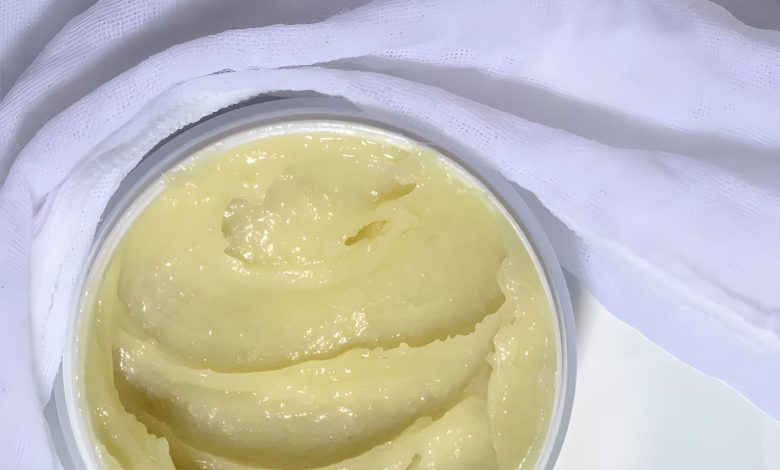
We’ve always said that sunscreen is the most essential part of any skincare regimen. We’re not joking; daily SPF protection is essential. When it comes to the most important skincare steps, sunscreen is a close second. What good is it to protect your skin if you don’t keep it clean? Although it may not be glamorous, cleansing your skin is essential. This is especially true when you are wearing makeup.
Even though removing makeup might seem simple, there are certain ways to remove it correctly. The wrong way to remove makeup can have long-term consequences. We went straight to the experts–board-certified dermatologists Margarita Lolis, MD, Teresa Song, MD, and makeup artist Daniel Martin–to learn how to remove makeup like an absolute pro. What they said is below.
Why it’s so important to remove your makeup
Lolis says that it is important to remove makeup completely every night to maintain good skin health. It allows for skin regeneration and prevents clogged pore which leads to acne and blackheads.
Not only are clogged pores a concern. Makeup can trap dirt and pollutants. If not removed properly, they can lead to skin damage, dryness, premature aging and congestion over time.
Makeup left on your skin will also prevent the absorption and effectiveness of any nighttime skincare products. If you don’t remove your makeup completely and properly, it’s not worth continuing with your skincare routine.
Do Makeup Removal Wipes Really Remove Makeup?
When we discuss makeup removal, it is inevitable that the topic of makeup-removing wipes will come up. While they may work in an emergency (anything is better than nothing), the experts advise against using them. All three experts warn against their use. Lolis explains that they are less effective at removing makeup and rubbing hard can cause irritation to the skin. “Fragrances and hidden ingredients may also irritate your skin.”
Song points out the fact that many makeup-removing wipes contain alcohol or acids, which can irritate the skin and cause it to dry. Don’t risk your skin or waste time with makeup-removing wipes. Micellar water is just as effective.
A step-by-step guide to removing makeup
Wash your Hands
Song and Lolis, as well as this writer, are all in agreement that you should wash your hands before removing makeup or touching your face at any time. Both Song and Lolis (and this writer!) are adamant that you should always wash your hands prior to removing makeup or touching your face in any way. You will avoid transferring bacteria and dirt to your face.
Remove your face makeup
There are two options that experts recommend for removing makeup: micellar or oil-based cleansers. Both are gentle enough to not strip your skin, but effective enough to remove all makeup. Micellar water is the best option for acne-prone skin or those who have sensitive skin. Oil-based cleanser are more effective at removing heavy makeup or faces that contain a lot of it. Many people alternate between the two depending upon their concerns for that particular day.
If you are using micellar waters, soak a cotton cloth or pad with the product and gently wipe away any makeup. Make sure you remove all makeup. Pay special attention to the areas such as the eyelids, hairline and jawline. Rinse not. Here are some of our favorites micellar waters.
Martin, on the other hand, prefers oil-based cleansers like Tatcha Camellia One Cleansing Oil or gentle cleansing balms like Indigo Cleansing Balm. “They fully dissolve makeup, oils and residues on your skin,” says Martin. Cleaning waters and makeup wipes are only temporary fixes, as they don’t remove all makeup from your pores. Here are our top picks for cleansing oils.
Apply a few pumps (or a small scoop) of oil-based cleansers to a face that is dry and gently massage it all over your face, including the eyes. Work the product into your skin for a minute or so. The makeup will be dissolved and the water will activate the oil emulsion, removing dirt and makeup from the face.
Remove Eye and Lip Makeup
For stubborn lip and eye makeup, you may need to use a mini cleanser. Martin recommends using micellar or cleansing oil on a cotton swab to remove waterproof mascara and liner. Hold the pad gently on your eyes for 15 to 20 second and then swipe it away. This method also works with lip stains and lipsticks that last a long time. If you prefer, you can use a special eye makeup remover that is designed to work with long-lasting, waterproof formulas. You can find our favorites here.
Cleanse
Some people debate whether or not a double cleanser is necessary, but when it comes down to makeup, the answer is clear: the first cleanser (whether you use an oil-based cleaner or just swipe on some micellar waters) removes makeup while the second cleanser cleanses your skin.
After makeup has been removed to the best of your ability (there is likely to be some residue on the skin, no matter how diligently you clean–which is why it is important to double-cleanse), use a hydrating cleanser that is suitable for your skin type. Massage the cleanser gently in circular motions around 60 seconds, before thoroughly rinsing with lukewarm tepid water.
After makeup removal, how to take care of your skin
After removing your makeup, you should focus on rehydrating your skin and treating it. Lolis and Martin both suggest using a hydrating toner or essence to draw moisture to the skin immediately and prepare it for active ingredients that you may apply later. Continue your normal skincare routine, as desired. Always finish with a moisturizing product.
Avoid these Common Mistakes
Although removing your makeup may seem simple, you should avoid a few common mistakes:
- Rub the skin aggressively All three experts warn you against rubbing the skin and pulling it while removing your makeup. Lolis says that rubbing your skin, particularly around the eyes can cause irritation and wrinkles.
- Avoid harsh products. Lolis warns against using products that are harsh or unsuitable for your skin (such as makeup removers containing alcohol or stripping cleanser). Can cause irritation, sensitivity, and dryness.
- Do not remove all makeup. Residual make-up, especially around the eyelids and jawline and in areas that are often neglected, such as the hairline and the area around the eyes, can cause acne and clogged skin pores.
- Skip the double cleanse. According Martin, a dual cleanse is essential for removing full-face makeup. A double cleanse is even more important for heavy or waterproof makeup.
- Using dirty tools or rough ones:Washcloths, makeup-removing sponges and the like can be too harsh on skin if used excessively. Dirty hands, cotton pads and other items such as towels, washcloths and sponges can introduce bacteria back into the skin. This causes irritation and inflammation.
- Do not neglect your lips and eyes: Lolis recommends removing any makeup from the eyelids and lips, as it can cause irritation or infection.
Takeaway
Face it, a haphazard approach to removing makeup won’t work. It will not only fail to remove your makeup but also set the stage for future issues with skin, as it will clog pores and prevent any products applied afterward from penetrating.
We understand that when you’re dragging yourself home from a night out at 1:48 am, you don’t want to mess with a 10-step skincare routine. You don’t need to! Try removing your makeup with micellar solution, cleaning with a simple, gentle cleanser and applying a thick moisturizing cream before going to bed. Before you go to bed, leave your micellar solution, cotton pads and cleanser on the counter of the bathroom. You won’t have to think twice about them when you enter the bathroom.




